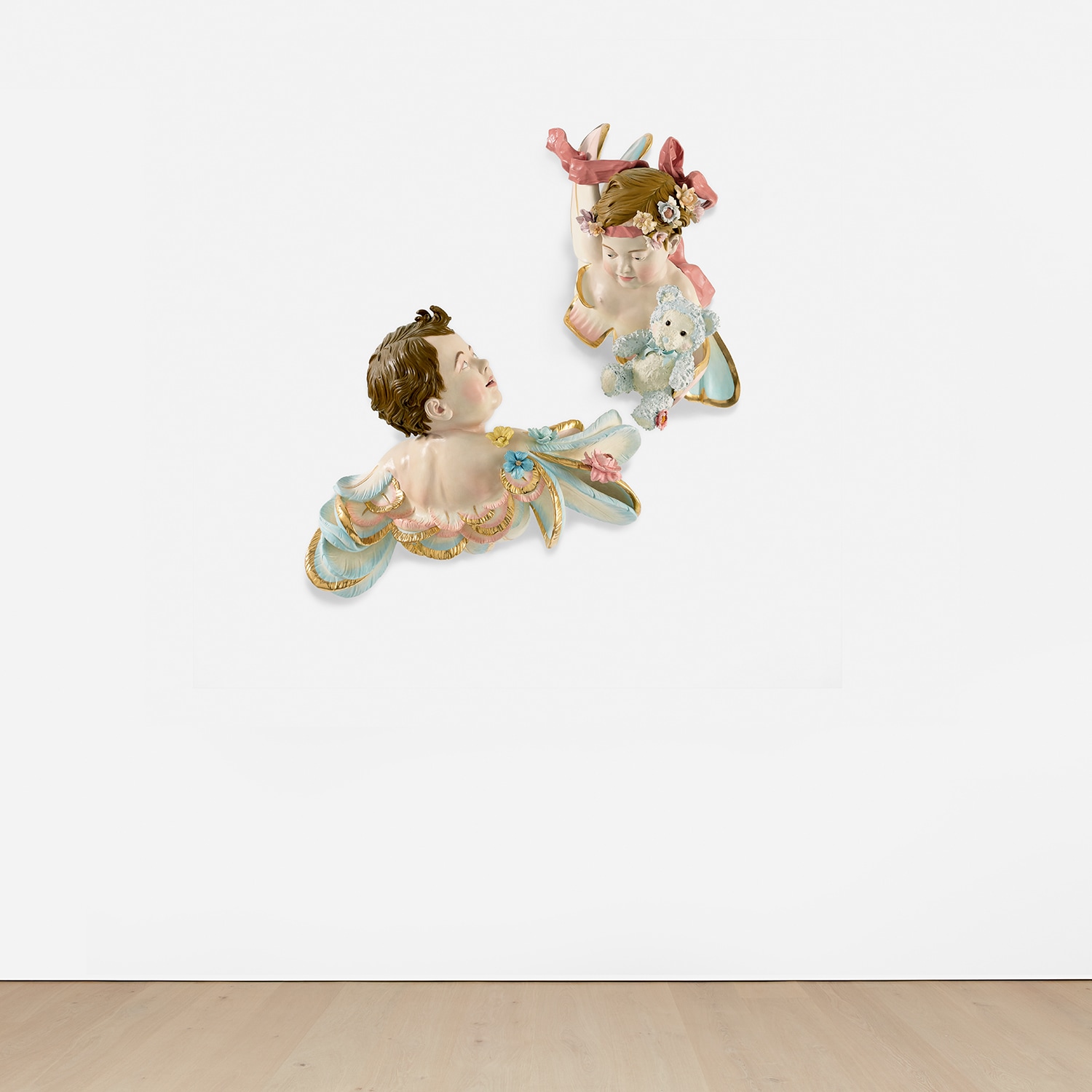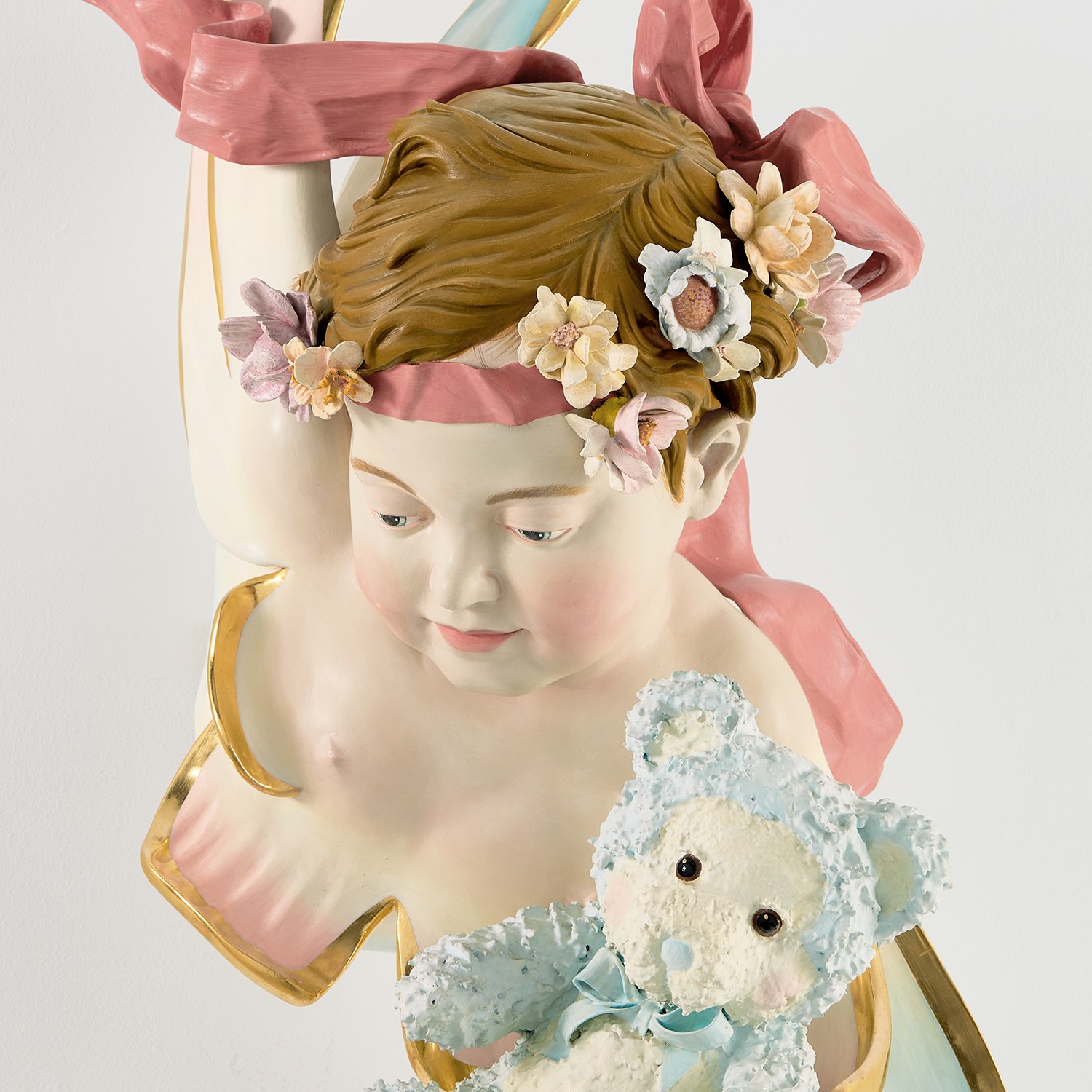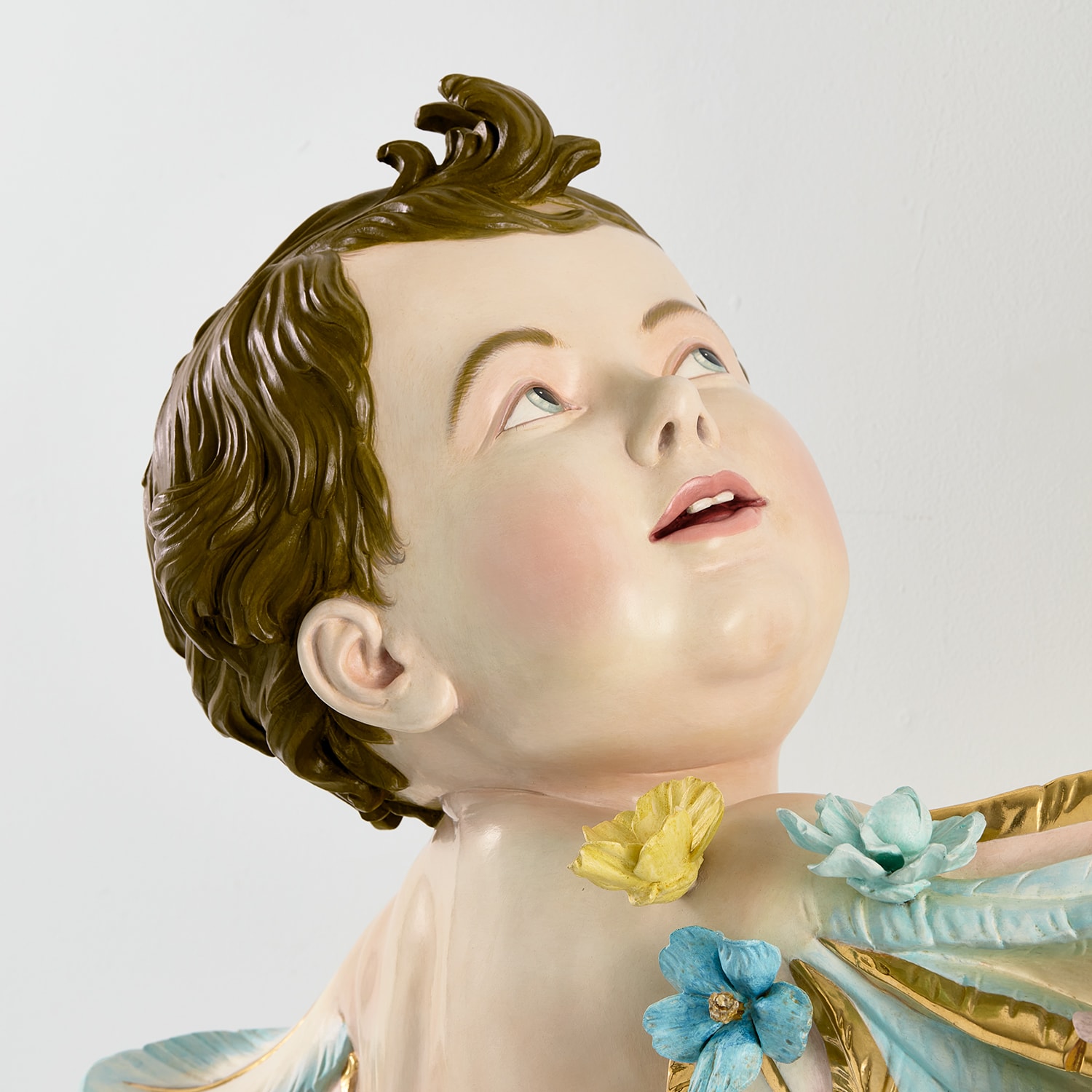







Property from a Distinguished Collection
16
Jeff Koons
Cherubs
inscribed with signature, number and date ‘3/3 91 J FUX’ on the underside of the female cherub’s left wing
polychromed wood, in 2 parts
121.9 x 110.5 x 48.3 cm (47 7/8 x 43 1/2 x 19 in.)
Executed in 1991, this work is number 3 from an edition of 3 plus 1 artist’s proof.